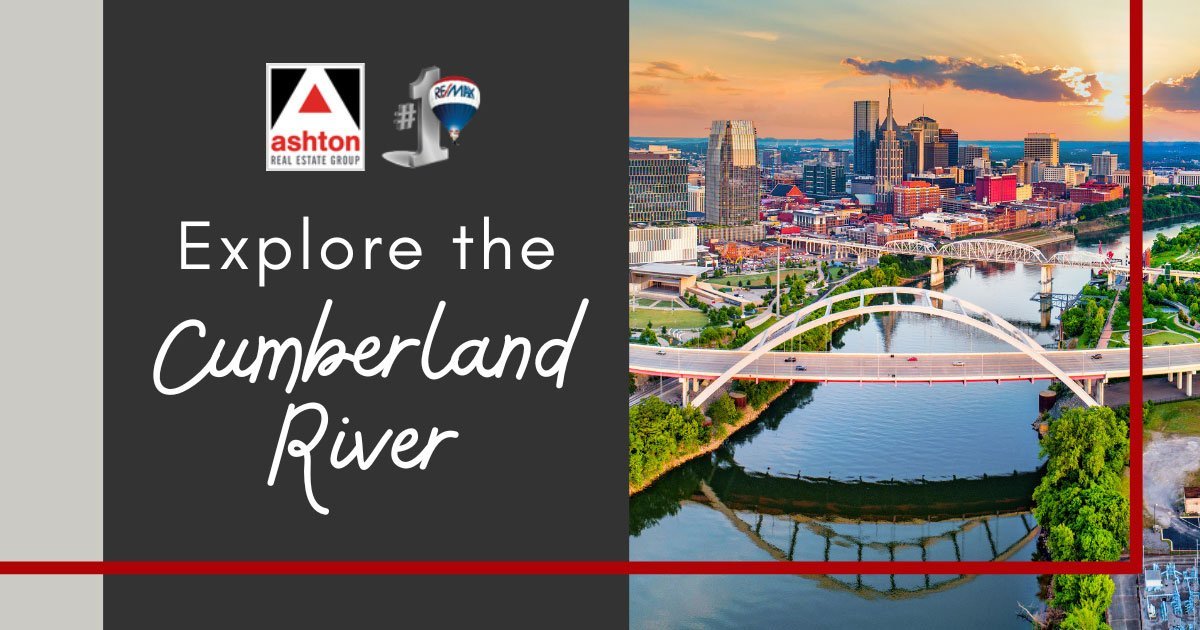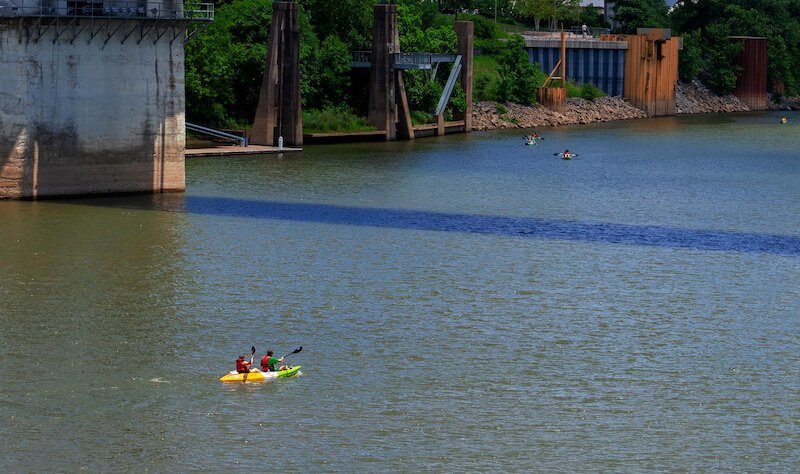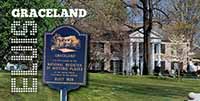
If you’re visiting or living in Nashville and looking to get out on the water, the Cumberland River is one of the top options within city limits.
This beautiful river flows right through Nashville, creating stunning views and endless recreation opportunities. Whether you're fishing, boating, or just enjoying riverside walks, living near the Cumberland adds something special to everyday life.
Learn more to decide whether a riverfront property is worth the premium price. Plus, discover which riverside neighborhoods give you the best bang for your buck. This guide covers everything you need to know about the Cumberland River—from where to find it to how to enjoy it.
Fun Facts About the Cumberland River
- Central to Nashville: The Cumberland River flows through downtown Nashville and stretches 687 miles through Tennessee and Kentucky.
- Recreational Hotspot: Offers year-round activities like kayaking, paddleboarding, fishing, and riverboat cruises, with launch sites at Shelby Park and Cumberland Park.
- Flood Management Infrastructure: Major dams like Wolf Creek, Dale Hollow, and Barkley help control flooding and generate power along the river’s path.
- Scenic & Social Appeal: The John Seigenthaler Pedestrian Bridge offers prime skyline views, while the General Jackson Showboat hosts live music cruises.
- Riverfront Living Perks: Neighborhoods like Historic Edgefield and Germantown offer river access, though buyers should research flood risks before investing.
Where Is the Cumberland River?
Looking for a natural getaway without leaving the city? The Cumberland River flows right through the heart of Nashville, creating one of the most beautiful natural features in Tennessee.
The Cumberland River starts in eastern Kentucky at Martins Fork. Its headwaters begin near Harlan County, and the river flows west through Kentucky before curving south into Tennessee.
Downtown Nashville is on the western bank of the river, and East Nashville is to the east. The river then runs northwest to Clarksville before crossing back into Kentucky. Finally, it joins the Ohio River near Smithland, Kentucky.
The Ohio River is part of the larger Mississippi River system, making the Cumberland an important tributary in this massive river network. This connection made the Cumberland vital for riverboat trade in the early days when settlers depended on water transportation.
Altogether, the Cumberland stretches about 687 miles and covers a basin of approximately 18,000 square miles. The Cumberland River basin includes parts of southern Kentucky, northern Tennessee, and a small section of southwestern Virginia.
This river isn’t just pretty to look at. The Cumberland connects some of Nashville’s best neighborhoods, provides recreation, and adds real value to nearby homes.
If you're house hunting in Nashville, homes with Cumberland River views or access can command higher prices, but the lifestyle benefits might be worth every penny.
Things to Do on the Cumberland River

To make the most of this natural resource, consider some ways to enjoy the Cumberland River, whether visiting or looking to buy a home nearby.
Kayaking and Stand-Up Paddleboarding
Paddling through the city is a totally different way to see Nashville.
Renting a kayak or paddleboard on the Cumberland gives you amazing views of the skyline and Nashville’s downtown neighborhoods. The water moves pretty slowly through the city, making it good for beginners.
Several rental shops operate along the riverfront with convenient landing points for getting in and out of the water. Most charge around $25–$45 per hour, or $75–$90 for a full day. Some even offer guided tours showing you the best river spots.
Some of Nashville’s best parks and marinas are excellent launch spots:
- Shelby Park (East Nashville)
- Cumberland Park (Downtown)
- Rock Harbor Marina (West Nashville)
Remember to check water conditions before heading out. After heavy rain, the current gets stronger and less predictable.
Fishing
The Cumberland River is one of Tennessee's best fishing spots. The river is packed with smallmouth bass, catfish, and sauger. Striped bass fishing is especially popular below the Old Hickory Dam in nearby Hendersonville. Some locals have pulled 40+ pound stripers from these waters!
You'll need a Tennessee fishing license, which costs about $34 for residents and $50–$100 for non-residents. You can buy one online or at sporting goods stores.
Best fishing spots:
- Below Old Hickory Dam
- Near Riverfront Park
- Around the Stones River junction
The convenience of Cumberland River fishing can’t be overstated for residents, as it’s much more accessible than Nashville’s lakes. Spring and fall usually offer the best fishing, but you'll find people casting lines year-round. Early mornings and evenings are more productive than the middle of the day.
Cumberland River Pedestrian Bridge Photos
If you’re looking for Instagram-worthy shots, the pedestrian bridges crossing the Cumberland River offer some of the best photo spots in Nashville.
The John Seigenthaler Pedestrian Bridge gives you perfect views of downtown Nashville and Nissan Stadium. The bridge itself makes for great photos, especially at sunset when the light hits the water just right.
For the best skyline photos:
- Visit at sunset for golden hour lighting.
- Try right after a rain for clearer air and better visibility.
- Come during special events when the city lights up the bridges.
The bridge connects downtown with East Nashville, making it easy to explore both areas in one day. It's totally free to visit and open 24/7.
General Jackson Showboat
For a completely different river experience, try the General Jackson Showboat. The boat is anchored near another one of Nashville’s top attractions, the Grand Ole Opry.
This huge paddlewheel boat offers cruises up and down the Cumberland. At 300 feet long and four stories tall, it's one of the largest showboats in the country.
Cruises include live music shows, meals, and amazing views of Nashville from the water. Tickets run about $45–$120 per person, depending on whether you choose a lunch or dinner cruise and what seating you pick.
The boat docks at Opryland, about 15 minutes from downtown Nashville. Most cruises last two to three hours and run year-round.
Living Near The Cumberland River
If you’re thinking about buying property near the Cumberland River, there are some great benefits—and a few things to watch out for.
Homes with river views or access typically sell for more than similar homes without water features. But they also usually hold their value better during market downturns.
However, some areas near the river have flood risks. You should always check flood maps before buying, and a good real estate agent can help you understand which areas are safer investments.
Some of the most popular riverside neighborhoods include:
- Historic Edgefield
- Downtown riverfront condos
- North side of Germantown
- Inglewood
These neighborhoods combine river access with proximity to Nashville's best restaurants, shops, and entertainment.
Understanding the Cumberland River System

The Cumberland River system isn't just one continuous waterway. It includes many tributaries that feed into the main river, creating a network of flowing water throughout the region.
This river system has been shaped over thousands of years. The U.S. Geological Survey has extensively studied how the Cumberland carved its path through the landscape, revealing how the river has changed course throughout history.
French traders first navigated these waters in the 1700s, establishing trading posts along the banks. They quickly recognized the river's value for transportation and commerce, a tradition that continues today with modern shipping. The Cumberland is still vital to the Tennessee economy.
The river flows at different rates depending on location, season, and rainfall. During spring, the Cumberland flows more rapidly due to rainfall and snowmelt. In summer and fall, the flow typically slows, making it better for recreation.
River levels can change dramatically with rainfall. The National Water Prediction Service, part of the more well-known National Oceanic and Atmospheric Administration (NOAA), monitors these changes and provides forecasts to help residents prepare for potential flooding.
Cumberland River Dams
To manage flood control, the U.S. Army Corps of Engineers has built several dams along the Cumberland:
- Wolf Creek Dam: Located in Kentucky, Wolf Creek Dam creates Lake Cumberland, one of the largest manmade lakes in the country. This dam provides flood control for communities downstream while generating hydroelectric power.
- Dale Hollow Dam: This dam created Dale Hollow Lake, one of the best lakes in Tennessee (located on the Tennessee-Kentucky border). The dam helps regulate water flow and prevents flooding in lower areas.
- Center Hill Dam: Located on the Caney Fork tributary, Center Hill Dam helps manage water levels and prevent flooding in the Cumberland River basin. It's another important piece of the flood control system.
- Barkley Dam: Near the end of the Cumberland, Barkley Dam works with Kentucky Dam on the Tennessee River to control flooding where the Cumberland meets the Ohio River.
These dams work together as a system, with operators adjusting water release based on rainfall, river levels, and flood risk.
Beyond Nashville: Cumberland Falls
While many people associate the Cumberland River with Nashville, one of its most spectacular features lies about 200 miles east. Cumberland Falls, often called the "Niagara of the South," drops 68 feet and spans 125 feet across.
Cumberland Falls is one of the few places in the world where you can regularly see a "moonbow"—a rainbow created by moonlight. This rare phenomenon occurs during a full moon on clear nights.
The falls are about a four-hour drive from Nashville, making it perfect for a weekend getaway. The drive will take you past some of the best state parks in Tennessee.
If you're considering buying property in eastern Tennessee, proximity to Cumberland Falls could be a unique selling point.
Nashville Residents Appreciate the Cumberland
Whether you're visiting for the weekend or house hunting in Nashville, the Cumberland River offers recreation, views, and lifestyle benefits that are hard to match.
For homebuyers, property near the river often represents a solid investment as long as you do your homework on flood risks and neighborhood development.
To explore riverside properties, check out current listings in Nashville's most popular waterfront neighborhoods, or schedule a showing to see these amazing properties in person.
If the opportunities of Nashville excite you, contact The Ashton Real Estate Group of RE/MAX Advantage with Nashville's MLS at (615) 603-3602 to get in touch with local real estate agents who can help find the perfect Nashville home for you today.



